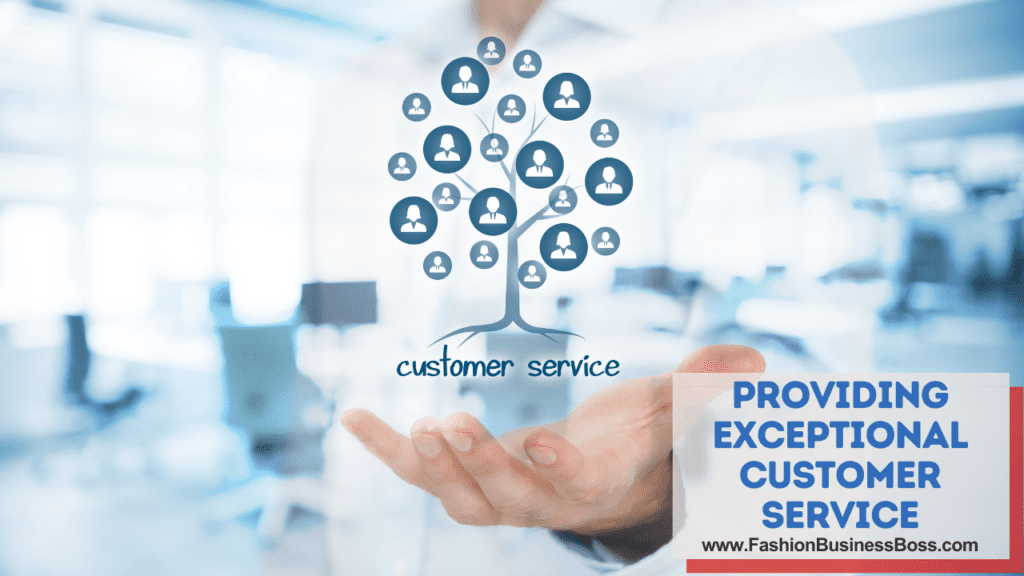Starting a clothing business can be an exciting and rewarding venture, but it also requires careful planning, market research, and a solid understanding of the industry. Whether you dream of creating your fashion line or curating a boutique, this guide will walk you through the essential steps to establish a successful clothing business.
Start a clothing business by identifying your niche and target audience, crafting a strong brand identity, sourcing quality materials, and embracing sustainable practices. With strategic marketing and exceptional customer service, success awaits in the fashion industry.
1. Identifying Your Niche and Target Audience
Before embarking on your fashion journey, taking the time to identify your niche and target audience is crucial for long-term success. Your clothing business’s success relies heavily on understanding what you want to sell and who your ideal customers are. Market research plays a pivotal role in this process as it helps you stay in tune with current trends, discover gaps in the market, and discern consumer preferences.
By pinpointing your niche, you can create a unique selling proposition that sets your brand apart from competitors. Whether you focus on sustainable fashion, athleisure wear, or vintage-inspired clothing, a well-defined niche allows you to tailor your products and marketing efforts to resonate with a specific audience.
Understanding your target customers empowers you to curate collections that cater to their needs, preferences, and aspirations. By delivering products that align with your customers’ desires, you increase the likelihood of building brand loyalty and attracting repeat business.
2. Crafting Your Brand Identity
In the competitive world of fashion, a strong brand identity is a cornerstone of success. It represents the essence of your clothing business, encapsulating its personality, values, and aesthetics. Crafting a captivating brand name, logo, and tagline that deeply resonates with your target audience is pivotal in leaving a lasting impression.
Your brand’s personality should evoke emotions and connect with your customers on a deeper level. Whether it’s conveying sophistication, edginess, or a carefree spirit, aligning your brand identity with the aspirations of your audience fosters a stronger bond.
Consistency is key when establishing brand recognition and loyalty. Your brand identity should be seamlessly integrated across all marketing channels, from social media to your website and physical stores. Cohesive product packaging reinforces your brand’s image and fosters trust in your customers.
By creating a strong and authentic brand identity, you not only stand out from the competition but also build a loyal customer base that resonates with your brand’s values and aesthetics. A well-crafted brand identity serves as a powerful vehicle to communicate your clothing business’s essence and purpose to the world.
3. Creating a Business Plan
A well-structured business plan is the bedrock upon which your clothing business is built. It serves as a comprehensive blueprint, guiding every aspect of your venture. Within your business plan, you’ll outline your mission, encapsulating the core purpose and values that drive your clothing brand. Your vision will paint a vivid picture of where you see your business heading in the future.
Crucially, your business plan will delve into market research, identifying your target market and understanding their needs, preferences, and behavior. Conducting a competitive analysis helps you grasp the landscape, enabling you to position your brand strategically and differentiate from rivals.
The plan extends to detail your marketing strategies, delineating how you will reach and engage your audience effectively. Financial projections forecast revenue, expenses, and profits, enabling you to gauge the financial viability of your business.
When seeking funding from investors or financial institutions, a robust business plan provides credibility, demonstrating your thorough understanding of the industry and the thoughtfulness behind your clothing business.
A detailed business plan serves as your compass, guiding you through challenges, opportunities, and growth. With a well-structured plan in hand, you can confidently navigate the journey of launching and scaling a successful clothing business.
4. Sourcing Quality Suppliers and Materials

The significance of delivering high-quality clothing products cannot be overstated when building a reputable brand. To achieve this, conducting thorough research and forging relationships with dependable suppliers is paramount. Collaborate with suppliers known for their consistent delivery of premium materials and fabrics, as the foundation of your garments lies in their quality.
Ethical sourcing and sustainable practices are now essential considerations for responsible fashion businesses. Choose suppliers who adhere to ethical standards in their production processes, ensuring fair wages and safe working conditions for their employees. Embracing sustainable practices, such as using eco-friendly materials and reducing waste, aligns your brand with the growing environmentally-conscious consumer base.
While quality is vital, cost-effectiveness is equally critical for the long-term sustainability of your business. Balance the pursuit of high-quality materials with competitive pricing to offer value to your customers.
Read more about Ten Key Resources You Need To Start A Clothing Business
5. Designing and Prototyping
The soul of any clothing business resides in its designs. To create a distinctive and appealing collection, you must seek out talented designers or collaborate with freelance artists who possess a keen sense of style and creativity. These creative minds will infuse your clothing line with unique and on-trend designs that captivate your target audience.
Prototyping is a crucial step in the design process. By developing prototypes, you can evaluate the practicality, fit, and overall quality of the garments. This iterative approach allows you to refine the designs until they meet your exacting standards.
Presenting the prototypes to potential buyers or conducting focus groups provides valuable feedback from your target market. This invaluable insight allows you to fine-tune your designs to better align with consumer preferences and demands.
Remember, the success of your clothing business hinges on its ability to offer fresh and captivating designs that resonate with customers. By nurturing creativity, embracing feedback, and continually pushing the boundaries of design, you can carve a unique and thriving space in the competitive fashion industry.
6. Setting Up Your Online and Offline Presence
In the ever-evolving digital landscape, establishing a robust online presence is no longer optional but essential for the success of a clothing business. Creating an e-commerce website serves as the virtual storefront that opens doors to a global audience. Your website should be meticulously designed to be user-friendly, ensuring a seamless and enjoyable shopping experience for visitors. Visual appeal is equally crucial, as captivating imagery and well-curated product displays can entice customers to explore your offerings further.
Security is of utmost importance when conducting online transactions. Implementing the latest security protocols and encryption ensures customer trust and protects sensitive information, fostering repeat business and brand loyalty.
In parallel, physical retail spaces or pop-up shops can complement your online presence. These tangible spaces cater to customers who relish in-person shopping experiences, providing an opportunity to engage with products physically and interact with attentive staff. A well-designed omnichannel strategy that seamlessly integrates both online and offline experiences allows your clothing business to thrive in today’s competitive marketplace.
7. Developing an Effective Marketing Strategy
Marketing is a cornerstone of success for any clothing business. To maximize your brand’s reach and impact, it’s crucial to harness a diverse range of marketing channels. Social media platforms, such as Instagram, Facebook, and Twitter, offer vast opportunities to connect with your target audience and showcase your clothing line.
Influencer marketing can be a powerful tool to amplify your brand’s message. Collaborating with influencers whose values align with your brand can help you tap into new audiences and boost brand awareness.
Content marketing allows you to provide valuable and relevant content to your audience. This can include fashion tips, styling guides, or behind-the-scenes glimpses into your brand’s story, fostering a sense of connection and loyalty among your followers.
Engagement is key to building brand authenticity and trust. Interact with your audience through comments, direct messages, and surveys to understand their preferences and needs better. Leverage user-generated content to showcase real people wearing your products, creating an authentic and relatable brand image.
8. Managing Inventory and Supply Chain
Efficient inventory management and a streamlined supply chain are vital components of a successful clothing business. Maintaining optimal stock levels is essential to avoid stockouts, which can lead to lost sales and dissatisfied customers, as well as overstocking, which ties up valuable resources.
Investing in inventory management software provides valuable insights into your stock levels, sales trends, and customer demands. By analyzing this data, you can make informed decisions about inventory replenishment, ensuring you have the right products available when customers want them.
Establishing strong and healthy relationships with suppliers is crucial to maintaining a well-organized supply chain. Clear communication and mutual understanding of expectations lead to timely deliveries and a smooth flow of goods. Collaborating with reliable suppliers reduces the risk of disruptions and ensures a steady supply of materials, enabling your clothing business to meet customer demands consistently.
9. Providing Exceptional Customer Service

In the fiercely competitive clothing industry, outstanding customer service can be the make-or-break factor that sets your brand apart. Exceptional customer service starts with well-trained staff who embody the values and vision of your clothing business. Train them to be knowledgeable about your products, fashion trends, and sizing, ensuring they can provide valuable assistance to customers.
Cultivate a culture of courtesy and responsiveness, encouraging staff to engage with customers warmly and attentively. Promptly addressing customer inquiries and concerns showcases your commitment to their satisfaction and builds trust.
Customer feedback is a valuable resource for improvement. Actively solicit feedback through surveys or reviews, and use this insight to refine your products, services, and overall shopping experience. Demonstrating a genuine willingness to listen and improve based on customer feedback fosters loyalty and advocacy.
Read more about How To Best Retain Customers For Your Fashion Brand
10. Embracing Sustainability and Ethical Practices
In today’s fashion landscape, sustainability and ethical practices have become paramount considerations for consumers. As a clothing business, embracing sustainability is not only an ethical responsibility but also a strategic advantage. Start by reevaluating your supply chain and sourcing materials from environmentally-friendly sources. Opt for eco-friendly fabrics, organic cotton, or recycled materials, reducing the environmental impact of your products.
Implementing sustainable production processes and minimizing waste are essential steps to reduce your carbon footprint. Consider eco-conscious manufacturing methods, such as water-efficient dyeing techniques and energy-saving practices.
Packaging plays a crucial role in sustainability efforts. Switch to eco-friendly and recyclable packaging materials to reduce single-use waste and demonstrate your commitment to the environment.
Transparent communication is vital when conveying your sustainability efforts to consumers. Clearly communicate your eco-friendly initiatives through your website, marketing materials, and product tags. Engage in open dialogue with your customers, sharing the progress you’ve made and acknowledging areas where you aim to improve.
Conclusion
Starting a clothing business requires a blend of creativity, entrepreneurship, and business acumen. By identifying your niche, building a strong brand identity, and understanding your target audience, you can lay the foundation for a successful venture. Embrace sustainable practices, provide excellent customer service, and develop a robust marketing strategy to differentiate your brand and foster long-term success in the dynamic fashion industry. Remember, with passion, perseverance, and strategic planning, your clothing business can flourish and make a lasting impact in the fashion world.
Frequently Asked Questions

1. Do I need a fashion design background to start a clothing business?
While a design background can be beneficial, you can collaborate with talented designers or freelance artists to create your clothing line.
2. How important is customer service in the clothing industry?
Exceptional customer service fosters brand loyalty and positive word-of-mouth. Train your staff to be responsive and address customer inquiries promptly.
3. Should I focus on a specific demographic or offer a broad range of clothing?
Specializing in a niche can help you stand out, but offering a well-curated collection can attract a broader customer base. Choose based on your business goals.
To learn more about starting your own clothing business, check out my startup documents here.
Please note that the contents of this blog are for informational and entertainment purposes only and should not be construed as legal advice. Any action taken based on the information provided in this blog is solely at your own risk. Additionally, all images used in this blog are generated under the CC0 license of Creative Commons, which means they are free to use for any purpose without attribution.

Meet Shawn Chun: Entrepreneur and Fashion Business Fan.
I’m a happy individual who happens to be an entrepreneur. I have owned several types of businesses in my life from a coffee shop to an import and export business to an online review business plus a few more and now I create online resources for those interested in starting new ventures. It’s demanding work but I love it. I do it for those passionate about their business and their goals. That’s why when I meet a designer or boutique owner at a craft fair, farmers market, retail location or anywhere else I see myself. I know how hard the struggle is to retain clients, find good employees and keep the business growing all while trying to stay competitive.
That’s why I created Fashion Business Boss: I want to help fashion business owners like you build a thriving business that brings you endless joy and supports your ideal lifestyle.

